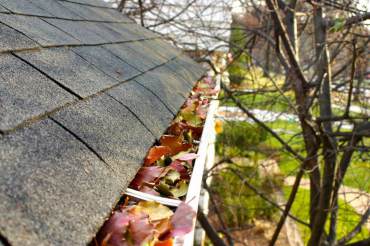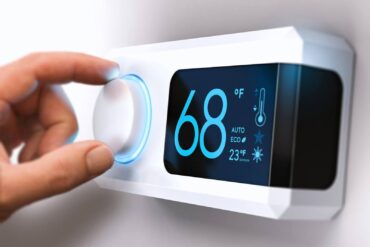 Home maintenance. The very words might evoke thoughts of an entire weekend spent laboring at home instead of relaxing in it, but that doesn’t always have to be the case.
Home maintenance. The very words might evoke thoughts of an entire weekend spent laboring at home instead of relaxing in it, but that doesn’t always have to be the case.
“Not every home maintenance project has to be a large undertaking or one that takes up all of your free time,” said Christopher O’Rourke, Mercury Insurance vice president of property claims. “There are small weekend projects that can save you time, worry and money in the long run.”
Here are six home maintenance projects you can do this weekend that will save you the headache of costly repairs later on.
1. Clean refrigerator coils.
To keep your refrigerator properly working, it’s best to clean the coolant coils every six months.
Coolant coils, which can be located on the back or bottom of the refrigerator, keep warm air out. When the coils are covered with dust, dirt or hair, they can’t release heat efficiently.
In turn, the coils work harder and longer, using more energy and shortening the life of the appliance. This might end up costing you more in the form of a higher energy bill or purchase of a new refrigerator.
Clean your refrigerator coils with a vacuum and coil cleaning brush. You can find these brushes at appliance stores or online for $10 or less.
2. Check caulking.
Caulking is customary around wet areas like bathtubs and sinks to keep water from seeping into the wall, but it’s also used around windows and doors to prevent air from escaping.
Check for significant air-temperature differences near windows and walls and use a digital thermometer to verify air leaks. Make sure also to check areas where vents and plumbing fixtures meet the outside wall.
Old caulking can dry out and crack, making it vulnerable to air and water leaks. If you notice dry or cracked caulking, remove as much of it as possible and reseal. Caulking gun sets that include the sealant, scraping and smoothing tool cost starting around $35 and can be found online or at your local hardware store.
3. Examine the roof.
The first step of roof inspection is to check the inside of your home. Look for damp spots or water stains on the ceiling or for cracked plaster along the wall. These can be signs of water damage.
At ground level, do a visual examination of your roof’s exterior for any cracked or missing shingles. Notice if you have to trim back tree branches that may make contact, as they can damage your roof’s exterior.
If you suspect any type of damage, contact an experienced roofer who can perform a thorough inspection.
4. Clean the gutters.
Gutters are necessary for directing water away from your home’s foundation. Their exposure to the elements means that they need to be cleaned and inspected regularly.
While cleaning out dirt and leaves, make sure the gutters are securely attached to your house. The weight of heavy snowfall, rain and dirt can cause them to loosen and pull away from the home.
“Gutters that are free of dirt and debris will keep rain from running down the sides of your home and coming in through the foundation,” O’Rourke said. “Routine maintenance means lower homeowner costs by addressing small issues before they become problematic.”
5. Clean the chimney.
Chimneys should be cleaned once a year, especially before the first fire of the season. Check the inside of the chimney to make sure it’s clear of any debris or small animals nesting, as these types of blockages could cause a fire. Thoroughly clear away ash or soot around the chimney before the cold weather starts.
 6. Install a programmable thermostat.
6. Install a programmable thermostat.
Programmable thermostats are both a money and energy saver. They allow you to set a comfortable temperature when you’re home and can be scheduled to lower the temperature while you’re away, helping you save money by cutting down energy usage.
“Programmable thermostats allow homeowners to set the heating and cooling of their home to their schedule,” said O’Rourke. “It’s one less thing for homeowners to worry about and they are fairly easy to install.”
Your home is not only your sanctuary, it’s your commitment. Assessing your homeowners’ coverage and understanding your policy is a simple household task you can accomplish this weekend and one that can save you money.






















Comments